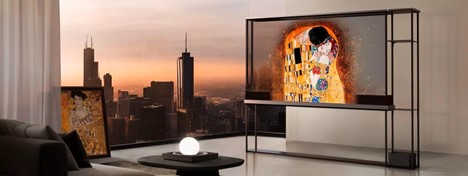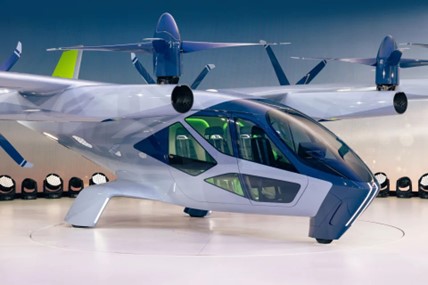Last month, roughly 130,000 attendees and more than 4,000 exhibitors gathered in Las Vegas for the Consumer Electronics Show (CES), a multi-day trade event put on by the Consumer Technology Association. CES is all about the latest and greatest in consumer technology industry and it’s intent is to demonstrate why tech innovation is so valuable for businesses and consumers across a every single industry.
CES has a mission: To stand for innovators and the promise and power of technology—which is exactly what keynote speakers of the conference addressed this year. We saw Siemens CEO Dr. Roland Busch showcase how technology is enabling brands to improve the way we live, work, move and make. L’Oréal CEO Nicolas Hieronimus took the stage to discuss the role that sustainable, accessible and inclusive beauty tech plays in driving positive impact. Chief executives from Snap Inc., MediaLink, Northwestern Mutual, Autodesk and McDonalds shared a sit-down conversation on why creating brands and products that people love is a key driver for business success.
These keynote conversations—and the many other sessions available to watch on CES’ website—paved the way for the exhilarating expo full of next-gen technologies that are empowering the future of all industries. Below, we’ve listed out the top trends we saw at the show this year, and demonstrate how brands are working tirelessly to meet the changing consumer demands.
AI is everything, everywhere, all at once
While 2024 is far from the first time AI-powered products were spotlighted across the booths, this was truly the year that artificial intelligence dominated the show. You couldn’t escape it—from ChatGPT capabilities, AI-driven marketing, AI-enabled cars, fitness trackers beauty gadgets and robots—it was everywhere and in everything. Even the theme for CES looked and felt AI-generated.

We witnessed Microsoft announce a major change to the Windows keyboard for the first time in nearly 30 years, by adding a button that provides a direct link to launch its AI Copilot. According to Microsoft, Copilot is an “everyday AI companion. It uniquely incorporates the context and intelligence of the web, your work data and what you are doing in the moment on your PC to provide better assistance – with your privacy and security at the forefront.”
Volkswagen is another big brand dabbling with AI, by adding ChatGPT as a standard feature in its vehicles this year. According to Volkswagen, “future cars will offer a uniquely intelligent, automotive-grade ChatGPT integration that gives customers seamless access to the constantly growing artificial intelligence database in all Volkswagen models.”
We even saw some more eccentric use cases for AI, with SK Group unveiling an AI Fortune Teller powered by next-generation memory technologies that claims to tell users’ their fortunes by reading their emotions. After snapping a photo of your face, it produces a Tarot card-like print with a short, future-looking message or piece of advice.
FoodTech grows its slice of the pie
At CES this year, the kitchen got a massive upgrade. It was amazing to witness tech innovations collide with scientific progress, such as how food is produced, packaged and delivered. Even Martha Stewart took to the stage at the Samsung CES booth, crafting her “Martha-tini” and smashed potatoes via the company’s SmartThings technology.
We saw cocktail robots, smart fridges and even a microbe-driven organic composter. There was a $3,500 toaster for steak promising to grill the perfect Ribeye in two minutes, and the TechMagic Stir-Fry robot, an autonomous machine large enough designed for restaurants, exhibited how it can create 30 meals per hour at $6.66 per hour.
Now you see me, now you don’t: Transparent TVs.
For consumers, televisions are still of the most exciting category at CES and this year, brands took it up another notch. Samsung Electronics and LG Electronics both revealed TVs that practically disappear when they’re off. It’s almost hard to believe that LG’s will actually be available for purchase later this year, which is kind of amazing when you consider that we were just retiring plasma TVs about 10 years ago.
What’s novel about transparent TVs is they allow a screen to blend more seamlessly into the surrounding room when it’s not in use, rather than simply existing as a gigantic black rectangle that takes up space on a living room console or bedroom wall. When not in use, the display appears like an aquarium or a window with stars or other objects dancing across the glass. A black film rises to cover the rear when you want it to function as a regular TV.

Transportation takes flight
Futuristic looking cars revved their engines at CES, but most the most revolutionary concept to appear was Hyundai’s new flying taxi concept named S-A2 by Hyundai. The South Korean manufacturer envisions the electric vertical takeoff and landing vehicle as a commuter solution for urban areas with heavy traffic. The vehicle will be able to cruise at 120 mph (190 kph) at a 1,500-foot (460-meter) altitude while operating as quietly as a dishwasher, and available to take flight in 2028.
In regards to other transportation trends, we also saw Kodiak Robotics reveal its best shot at making self-driving trucks a business and Honda creating buzz around its new 0 Series EVs, which are notably thin and light and are scheduled to launch in North America in 2026.

Gaming gets retro and revolutionary
Nostalgia is at an all-time high for consumers, with the 2000s being very in trend nowadays. Gaming was an industry who embraced that fully at CES. We saw thereturn to old-school controllers, specifically Xbox’s original “Duke” controller which has a cult fan following. Hyperkin revealed that they recreated the Duke for modern gaming devices – called the Hyperkin DuchesS. That wasn’t all: The WowCube, which mimics the looks and functions of a Rubik’s Cube, caught attention of CES attendees. The devise lets you twist its’ many screens, tilt the device and tap the screens to play games.
While we held space to celebrate our the past, gaming also took some revolutionary and meaningful steps forward. For one, accessibility in the gaming industry is on the rise. A keynote session, “The Evolution of Accessible Gaming,” discussed all the ways the industry is breaking down barriers to make gaming accessible for all. We watched Sony launched the Access controller for PlayStation, as example.
On another note, Razer’s showed off a haptic feedback cushion for a gaming chair. Called Project Esther, this rumbly cushion has 16 haptic sensors that line up nicely against parts of someone’s lower body so that when they play games, they’ll get vibrating feedback in different regions based on what’s happening in-game.
Wellness gets a Tech-Makeover
Namaste from the comforts of your new home with new mindfulness and wellness concepts. A robot massager created by French company Capsix Robotics uses artificial intelligence to perform a real-time body scan and recommend the best kind of experience for the user. A robotic arm then performs a variety of massage techniques.
The BMind Mirror was also revealed at CES: A bathroom mirror designed to improve self-worth and mental health. As users stand in front of the mirror, it uses facial and gesture recognition and voice commands to analyze one’s expression and tone. It’ll then provide recommendations and affirmations and improve one’s mental state based on their current level of well-being.
The next wave of beauty tech made waves at CES, exposing a spectrum of advanced devices poised to fling our current skincare routines out the window. Amorepacific’s Lipcure Beam won the CES 2024 Innovation Award in the Digital Health category for its ability to provide immediate lip treatments and leave a custom-tinted hue. Antiaging technology was also seen by APR for the first time at CES their Medicube line of techy tools is known to treat a variety of skin concerns and improve elasticity, tone and texture.
CES met all expectations in 2024
The energy felt electric at CES this year, more than years prior—best described by the theme name, it was “All On”. Between the greatest brands, the most impactful technologies and the greatest minds, CES had no shortage of inspiration, automation and exhilaration.
Clearly there’s no one specific industry that drives the most attention at CES, but emerging technology like AI and IoT within those industries were what drove the greatest buzz. Even though many products at CES will never become available for purchase (or will get acquired and incorporated into products we end up buying), the audience, including my team, always comes excited and ready to see where technology is going.
This write up only scratches the surface of the amazing innovation revealed at the event this year. What was your favorite reveal at CES? We look forward to reading your comments and engaging on the highlights you most enjoyed.

